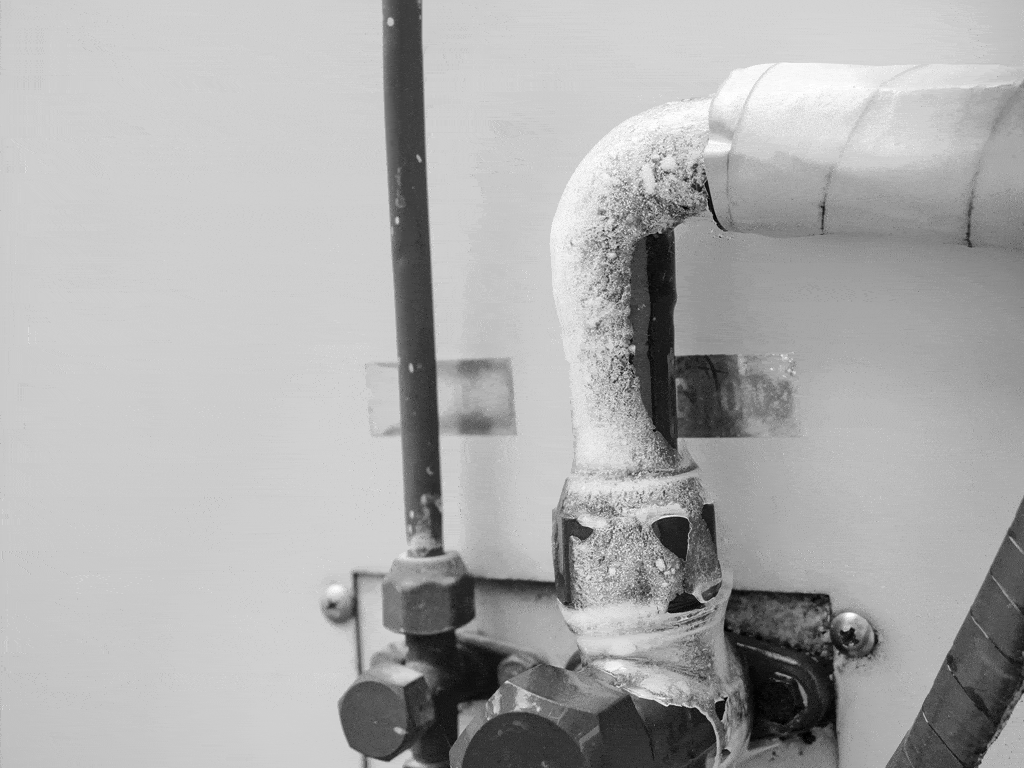
Revolutionize Comfort: Water Pipe Heating Systems Unveiled
Have you ever wondered how to keep your home cozy and warm during the chilly months without skyrocketing your energy bills? If so, you’re not alone.
Many homeowners like you are turning to innovative solutions to enhance their home’s warmth and comfort. Water pipe heating systems have emerged as a game-changer in this quest for efficient home heating.
In this article, we’ll dive deep into the world of water pipe heating systems.
You’ll learn everything from the basics of how they work to the nitty-gritty of installation, maintenance, and cost-effectiveness. Whether you’re a new homeowner or looking to upgrade your existing heating system, this guide is tailored to help you make an informed decision.
What is a Water Pipe Heating System?
A water pipe heating system is a modern and efficient approach to home heating, where hot water is circulated through a network of pipes to radiate heat throughout a space. This method stands in contrast to traditional heating systems that often rely on forced air.
The key advantage of a water pipe heating system lies in its ability to provide a consistent and even distribution of warmth, eliminating the hot and cold spots commonly associated with conventional heaters.
These systems, also known as hydronic heating, can be installed under floors, within walls, or in baseboard heaters, offering a versatile solution for various home layouts.
The heat emanating from the pipes is gentle yet effective, creating a comfortable environment without the dryness often caused by standard heating methods. This not only enhances the comfort level within your home but also contributes to better air quality, as it doesn’t circulate dust and allergens.
Moreover, water pipe heating systems are lauded for their energy efficiency.
By utilizing water as a thermal conductor, these systems require less energy to maintain warmth, leading to potentially lower utility bills.
This efficiency, coupled with the system’s longevity and low maintenance requirements, makes it an increasingly popular choice among homeowners who prioritize both comfort and sustainability.
A water pipe heating system represents a significant step forward in residential heating technology, offering a blend of efficiency, comfort, and environmental friendliness that is hard to match with traditional heating methods.
Also read: Air Conditioning Repair: The Ultimate Guide To Cooling Comfort
How Do Water Pipe Heating Systems Work?
Understanding the Mechanics
At the core of a water pipe heating system is a simple yet effective mechanism: circulating hot water through a network of pipes. This system can be integrated into various parts of a home, including under floors, within walls, or in radiators.
The process begins with a boiler or a water heater that heats the water to the desired temperature. Once heated, this water is pumped through the pipes, creating a continuous flow that carries the warmth to different areas of the house.
Radiant Heating: A Key Feature
One of the standout features of these systems is radiant heating.
Unlike traditional heating methods that heat the air, radiant heating warms up objects and surfaces directly. This direct transfer of heat from the pipes to the floors and walls provides a more uniform and natural warmth.
The result is a comfortable, evenly heated space without the hot and cold spots often associated with forced-air systems.
Efficient Heat Distribution
The design of a water pipe heating system allows for efficient heat distribution.
The water, with its high thermal capacity, retains heat effectively and disperses it evenly throughout the room. This efficiency not only enhances comfort but also contributes to energy savings.
Since the system operates at a lower temperature compared to conventional heating systems, it requires less energy to maintain the same level of warmth, leading to reduced heating costs.
Versatility and Adaptability
These systems are highly adaptable and can be customized to fit various home layouts and heating needs.
Whether it’s a large open-plan area or a small, confined space, the network of pipes can be laid out in a pattern that ensures optimal heat distribution.
Additionally, the system’s versatility allows it to be used in conjunction with other heating solutions, such as solar heating, further enhancing its efficiency and eco-friendliness.
The workings of a water pipe heating system revolve around the efficient circulation of hot water through pipes, offering a comfortable, cost-effective, and versatile heating solution for modern homes.
Types of Water Pipe Heating Systems
Radiant Floor Systems
Radiant floor systems, a popular type of water pipe heating system, are renowned for their ability to provide consistent and even heat across an entire room.
Installed beneath the flooring, these systems utilize a network of pipes through which hot water circulates, gently warming the floor surface above.
This method not only ensures a comfortable foot-warming sensation but also allows heat to rise evenly throughout the space, eliminating cold spots. Ideal for various types of flooring, including tile, wood, and concrete, radiant floor systems are a top choice for homeowners seeking a seamless and efficient heating solution.
Baseboard Heaters
Baseboard heaters represent a more straightforward approach to water pipe heating. These systems are typically easier to install and are well-suited for targeted, room-specific heating.
The hot water flows through pipes located within baseboard units positioned along the walls.
As the heat rises from these units, it creates a warm and cozy environment in the designated area. This type of system is particularly beneficial for supplementing existing heating solutions or for use in additions or renovations where installing a full radiant floor system may not be feasible.
Radiators: A Classic Choice
Radiators, often associated with traditional heating methods, are experiencing a resurgence in popularity.
This comeback is driven by their improved efficiency and aesthetic appeal. Modern radiators connected to a water pipe heating system are designed to be more efficient and less obtrusive than their older counterparts.
They can serve as both a heat source and a decorative element in a room. Radiators are particularly appealing in homes with a classic or vintage aesthetic, where they can complement the overall design while providing reliable and efficient heating.
Whether you opt for the uniform warmth of radiant floor systems, the targeted heat of baseboard heaters, or the classic appeal of radiators, water pipe heating systems offer a range of options to suit different needs and preferences.
Each type brings its unique set of advantages, ensuring that there is a water pipe heating solution for every home.
Installation Process of Water Pipe Heating Systems
Initial Consultation and Planning
The installation of a water pipe heating system begins with a thorough consultation with a heating professional. This step is crucial to understand the specific needs and layout of your home.
During this phase, the professional will assess your home’s current heating system, the structure of your house, and your heating requirements. This assessment helps in designing a system that is tailored to your home’s unique characteristics, ensuring optimal efficiency and performance.
Designing the System
Once the initial assessment is complete, the next step involves designing the system. This includes determining the type of system (such as radiant floor, baseboard heaters, or radiators), the layout of the pipes, and the capacity of the boiler or water heater needed.
The design process is critical as it influences the system’s efficiency and the even distribution of heat throughout your home. Professionals use specialized software and their expertise to create a design that maximizes heat output while minimizing energy consumption.
Laying the Pipes
The physical installation begins with laying the pipes. This can be a complex process, especially for radiant floor systems, as it might involve lifting floors or making alterations to the existing structure.
For baseboard heaters and radiators, the process involves installing pipes along walls and connecting them to the heating units. The installation must be precise to ensure that there are no leaks and that the system operates efficiently.
Boiler or Water Heater Installation
A critical component of a water pipe heating system is the boiler or water heater. This unit is responsible for heating the water that circulates through the pipes.
Installing the boiler or water heater requires careful consideration of its location, venting, and fuel source. It’s essential to choose a unit that is adequately sized for your home to ensure it can meet your heating needs without wasting energy.
Testing and Final Adjustments
After the installation of the pipes and the heating unit, the system is thoroughly tested.
This testing includes checking for leaks, ensuring that the boiler or water heater is functioning correctly, and verifying that the system is heating the space evenly. Any necessary adjustments are made during this phase to ensure the system operates at peak efficiency.
Installing a water pipe heating system is a detailed process that requires professional expertise. From the initial consultation to the final testing, each step is crucial to ensure that the system is efficient, effective, and tailored to the specific needs of your home.

Photo By MinskDesign at Shutterstock
Benefits of Water Pipe Heating Systems
Enhanced Energy Efficiency
One of the most significant benefits of water pipe heating systems is their superior energy efficiency. These systems use water as a medium for heat distribution, which is more efficient at retaining heat compared to air-based systems.
This efficiency translates into reduced energy consumption and lower utility bills.
Homeowners can enjoy a warm and comfortable environment in their homes without the worry of escalating energy costs, making these systems a cost-effective solution in the long run.
Uniform and Comfortable Heat Distribution
Water pipe heating systems excel in providing even heat distribution throughout the home.
The radiant heat emitted from the pipes ensures a uniform warmth that eliminates the cold spots commonly associated with traditional heating methods.
This even distribution of heat not only enhances the comfort level within your home but also contributes to a more consistent temperature in all rooms, making every corner of your house equally inviting.
Improved Indoor Air Quality
A notable advantage of water pipe heating systems is their positive impact on indoor air quality. Unlike forced-air systems, which can circulate dust, pet dander, and allergens throughout the home, water pipe heating systems do not disturb the air.
This feature is particularly beneficial for individuals with allergies or respiratory issues, as it helps maintain cleaner and healthier air inside the home.
Silent Operation
The quiet operation of water pipe heating systems is a subtle yet appreciated benefit. These systems function without the noise associated with the blowing of air, offering a peaceful and tranquil environment.
This silent operation is especially advantageous in settings where noise can be a disturbance, such as bedrooms, home offices, or libraries.
Customization and Zoning Capabilities
Water pipe heating technology offers impressive customization and control. With zoning capabilities, homeowners can easily regulate the temperature in different areas or zones of their home. This means you can have different temperatures in various rooms according to individual preferences or usage, leading to enhanced comfort and more efficient energy use.
Zoning also allows for heating only the occupied areas of the home, further contributing to energy savings.
The benefits of water pipe heating systems are manifold, ranging from energy efficiency and even heat distribution to improved air quality, quiet operation, and customization.
These advantages make them an attractive option for homeowners looking to upgrade their heating systems, providing a comfortable, healthy, and efficient living environment.
Also read: Discover The Ultimate Air Conditioning Service
Maintenance and Upkeep of Pipe Heating Systems
Regular Inspections for Leak Detection
One of the most crucial aspects of maintaining a pipe heating system is regularly checking for leaks. Even small leaks can lead to significant issues over time, including reduced efficiency and potential damage to your home.
Regular inspections involve examining the visible parts of the system, such as pipes and radiators, for any signs of moisture or water damage.
Early detection of leaks can prevent more extensive repairs in the future and ensure the system continues to operate efficiently.
Boiler and Water Heater Maintenance
The boiler or water heater is the heart of the water pipe heating system, and its proper functioning is essential for efficient heating.
Regular maintenance of the boiler includes checking the pressure levels, inspecting the burner and heat exchanger, and ensuring all connections are secure.
It’s also important to ensure the venting system is clear and functioning correctly to prevent any hazardous situations. Professional servicing of the boiler or water heater should be done annually to keep it running smoothly and efficiently.
Flushing the System
Over time, sediment and debris can build up in the pipes of a water pipe heating system, which can hinder its efficiency.
Flushing the system periodically is an essential maintenance task.
This process involves draining the water from the system and then running clean water through the pipes to remove any sediment build-up. Flushing helps maintain the system’s efficiency and prevents blockages that can cause uneven heating or damage to the system.
Checking and Balancing Radiators
If your system includes radiators, it’s important to check and balance them regularly. This process ensures that each radiator receives an adequate flow of hot water, which is crucial for even heating throughout your home.
Balancing involves adjusting the valves on each radiator to ensure an even distribution of heat. This is particularly important in systems where some rooms are not reaching the desired temperature.
Seasonal Preparations
As seasons change, particularly in the transition to colder months, it’s important to prepare your water pipe heating system for increased use.
This includes checking the overall system, ensuring all components are in good working order, and making any necessary repairs before the system is needed full-time. Seasonal preparations help avoid breakdowns during peak usage times.
Regular maintenance and upkeep are vital for the longevity and efficiency of your water pipe heating system.
Regular inspections, boiler maintenance, system flushing, radiator balancing, and seasonal preparations are all key components of a well-maintained system. Proper maintenance not only extends the life of the system but also ensures it operates at peak efficiency, providing comfortable and consistent heating in your home.
Cost and ROI of Pipe Heating Systems
Initial Investment in Water Pipe Heating Systems
The initial cost of installing a pipe heating system can be higher compared to traditional heating methods. This cost includes the price of the boiler or water heater, the pipes, and the labor involved in installation.
The complexity of the installation, especially for systems like radiant floor heating, can add to the initial expense. However, this upfront investment should be viewed in the context of the long-term benefits and savings that these systems offer.
Energy Efficiency and Reduced Utility Bills
One of the most significant advantages of a water pipe heating system is its energy efficiency. These systems operate more efficiently than traditional forced-air systems, as they provide direct heat transfer through water, which retains heat better than air.
This efficiency translates into lower energy consumption and, consequently, reduced utility bills. Over time, the savings on energy costs can offset the initial investment, making the system more cost-effective in the long run.
Increased Comfort and Home Value
Apart from energy savings, water pipe heating systems offer an increased level of comfort. The even heat distribution eliminates cold spots and creates a more comfortable living environment.
This enhanced comfort can be a significant factor in improving the quality of life within your home. Additionally, the installation of a modern heating system like this can increase your home’s value, making it an attractive feature for potential buyers if you decide to sell.
Longevity and Reduced Maintenance Costs
Water pipe heating systems are known for their durability and longevity.
With fewer moving parts than traditional heating systems, they are less prone to breakdowns and require less maintenance. This durability means fewer repair costs over the life of the system, contributing to the overall return on investment.
Environmental Impact and Savings
These systems are not only beneficial in terms of cost and comfort but also have a positive environmental impact.
By reducing energy consumption, they contribute to lower carbon emissions, aligning with eco-friendly living practices. This environmental consideration can be particularly important for homeowners who prioritize sustainability.
While the initial investment in a water pipe heating system might be higher than traditional heating systems, the long-term savings on energy bills, increased comfort level, enhanced home value, longevity, and positive environmental impact make it a worthwhile investment.
The return on investment (ROI) for these systems is realized through reduced utility costs, lower maintenance expenses, and the overall benefits to both the homeowner and the environment.

Photo By ImageFlow at Shutterstock
Choosing the Right Pipe Heating System for Your Home
Assessing Your Home’s Size and Layout
The first step in selecting the right water pipe heating system involves considering the size and layout of your home.
Larger homes may require more extensive systems with higher capacity boilers or water heaters, while smaller homes or apartments might benefit from simpler setups. The layout of your home, including the number of floors and room configuration, also plays a crucial role in determining the type of system that would be most effective.
For instance, radiant floor heating might be more suitable for homes with open floor plans, whereas baseboard heaters or radiators could be better for homes with compartmentalized rooms.
Evaluating Existing Heating Infrastructure
Another critical factor is your home’s existing heating infrastructure.
If your home already has a certain type of heating system in place, it might be more cost-effective to choose a water pipe heating system that can integrate with or complement the existing setup.
For example, if your home already has a boiler but uses radiators, switching to a hydronic baseboard system might be more straightforward than installing a completely new radiant floor system.
Budget Considerations
Budget is a significant consideration when choosing a water pipe heating system.
While the long-term energy savings and efficiency of these systems are appealing, the initial installation cost can be substantial. It’s important to balance the upfront costs with the potential long-term savings and increased comfort.
Setting a realistic budget and understanding the various options within that budget is crucial.
Professional Consultation for Tailored Solutions
Consulting with heating professionals, such as those at One Hour Air Conditioning & Heating of Dallas, is essential for making an informed decision. These experts can provide tailored advice based on your specific needs, home characteristics, and budget.
They can help you understand the different types of systems available, such as radiant floor heating, baseboard heaters, or radiators, and recommend the best option for your situation.
Additionally, professionals can offer insights into the installation process, maintenance requirements, and potential energy savings, ensuring you choose a system that aligns with your long-term heating goals.
Choosing the right water pipe heating system for your home involves a careful evaluation of your home’s size and layout, existing heating infrastructure, budget, and professional advice.
By considering these factors, you can select a system that not only meets your heating needs but also aligns with your financial considerations and enhances your overall home comfort.
Troubleshooting Common Issues in Water Pipe Heating Systems
Identifying and Addressing Air Locks
One common issue in pipe heating systems is the formation of air locks, which can hinder the flow of hot water through the pipes. This problem often manifests as cold spots in radiators or underfloor heating.
To address this, you can bleed the radiators or use an automatic air vent to release trapped air. Regularly checking for and removing air locks ensures that your system operates efficiently and provides consistent heat distribution.
Dealing with Noisy Pipes
Noisy pipes can be a sign of several issues in a pipe heating system. This noise could be due to high water pressure, improperly secured pipes, or even the presence of air in the system.
Reducing the water pressure can help if it’s too high. Securing loose pipes with proper brackets can eliminate rattling noises. If the noise is due to air in the system, bleeding the radiators or using an air eliminator can resolve the issue.
Managing Inconsistent Heating
Inconsistent heating, where some areas of the home are warmer than others, can be a challenge. This issue might be due to an imbalance in the system, a malfunctioning thermostat, or blocked pipes.
Balancing the system by adjusting the valves on radiators or the flow rate to different areas can help. Ensuring thermostats are functioning correctly and placed away from direct heat sources is also crucial. If the problem persists, checking for and clearing any blockages in the pipes is necessary.
Addressing Leaks in the System
Leaks in a water pipe heating system can lead to significant issues if not addressed promptly. Regular inspections can help identify leaks early.
If a leak is found, it’s important to determine its source – whether it’s from the pipes, radiators, or the boiler. Small leaks might be fixed with sealant, but larger leaks or those from the boiler should be addressed by a professional.
Boiler-Related Issues
Problems with the boiler, such as failure to ignite, can disrupt the entire heating system. Regular maintenance is key to preventing these issues.
If the boiler fails to start, checking the pilot light (in gas boilers), the thermostat settings, and the power supply can be the first steps. For more complex issues, such as those involving the internal components of the boiler, professional assistance is recommended.
understanding and addressing common issues in water pipe heating systems can significantly enhance their efficiency and longevity.
Regular maintenance, along with basic troubleshooting techniques for air locks, noisy pipes, inconsistent heating, leaks, and boiler problems, can save time and money, ensuring your system provides reliable and comfortable heating.

Photo By mucahiddinsenturk at Shutterstock
Top 5 Tested and Proven Tips on Pipe Heating Systems
1. Insulate Your Pipes
Insulating your pipes is a crucial step in protecting them from freezing temperatures. Using foam rubber or fiberglass sleeves, you can keep the water in your pipes above freezing, reducing the chance of turning into ice and expanding.
This is especially important for exterior pipework and pipes in uninsulated areas. Insulation helps retain heat for longer, though it doesn’t provide extra heat itself.
2. Turn Off Outdoor Faucets
Before the onset of winter, it’s wise to turn off your external water supply to prevent freezing. This involves shutting the isolation valves on the water lines leading to the outside faucets and draining any remaining water.
Disconnecting garden hoses and fittings is also recommended to avoid damage from freezing temperatures.
3. Clear Gutters and Drains
Ensuring that your gutters and drains are free from debris allows water to flow freely, reducing the likelihood of freezing and subsequent pipe blockages. This step also prevents damage to gutters from the weight of ice.
Regular cleaning of gutters and drains is an essential maintenance task for homeowners.
4. Keep the Heating On
Maintaining a minimum temperature in your home, even when you’re away, is vital to prevent pipes from freezing.
Setting your thermostat to at least 55°F helps keep the interior temperature above freezing, protecting your pipes. This is also beneficial for preventing mold growth in unoccupied rooms.
5. Apply Heat Tape
Heat tape, an electrical wire cable that produces heat, can be attached to areas prone to freezing. There are two types: self-regulating heating cables and constant wattage heating cables.
Self-regulating cables are more energy-efficient, only using electricity when needed. Both types can be installed as DIY projects, but professional assistance is recommended for optimal safety and efficiency.
These strategies provide a comprehensive approach to maintaining and optimizing pipe heating systems, ensuring they function efficiently and effectively, especially during colder months.
One Hour Air Conditioning & Heating of Dallas: The Go-to Water Pipe Heating Systems Experts
Expert Installation and Maintenance Services
One Hour Air Conditioning & Heating of Dallas stands out as a premier provider of water pipe heating systems.
With a strong focus on quality and customer satisfaction, they offer expert installation and maintenance services tailored to each homeowner’s needs. Whether you’re in Addison, TX, Allen, TX, Carrollton, TX, or surrounding areas, their skilled team is equipped to enhance your home with advanced heating solutions.
Their commitment to professionalism and punctuality aligns perfectly with the needs of homeowners who value efficiency and reliability.
High Customer Satisfaction and Reviews
The company boasts an impressive 4.9 rating from 577 reviews, reflecting their high level of customer satisfaction.
Reviews consistently praise their exceptional service, with customers highlighting the professionalism, knowledge, and courtesy of technicians like Michael Bell.
Clients appreciate the thorough explanations provided by the technicians, ensuring homeowners understand their heating systems and how to maintain them efficiently. This level of customer service is a testament to their dedication to not just meeting but exceeding client expectations.
Responsive and Reliable Support
One Hour Air Conditioning & Heating of Dallas is known for its responsive and reliable support, especially in emergency situations.
Their ability to provide same-day service, as noted in several reviews, is particularly valuable for urgent heating issues. This responsiveness is crucial for homeowners facing unexpected heating problems, ensuring that issues are resolved quickly and efficiently.
Comprehensive Heating Solutions
In addition to installation and maintenance, One Hour Air Conditioning & Heating of Dallas offers comprehensive solutions for pipe heating systems.
Their services include system design, installation, regular maintenance, and emergency repairs. They cater to a wide range of heating needs, from simple repairs to complete system overhauls, making them a one-stop shop for all heating requirements.
Contact for Consultation
For homeowners interested in installing or maintaining a pipe heating system, One Hour Air Conditioning & Heating of Dallas is an excellent choice.
They can be reached at #469-598-0524 for consultations, providing personalized advice and solutions for your specific heating needs. Their expertise and customer-centric approach make them a trusted partner for homeowners seeking efficient and reliable heating solutions.
Check out their reviews and ratings here to learn more about their services and how they can help enhance your home with a state-of-the-art water pipe heating system.
Conclusion
Water pipe heating systems mark a pivotal advancement in the realm of home heating technology. These systems are not just a step forward in terms of efficiency and comfort; they also align with the growing trend towards sustainable and environmentally friendly living practices.
The ability of these systems to provide consistent, energy-efficient heating solutions places them at the forefront of modern home improvement options.
The shift towards more sustainable living practices is a critical aspect of contemporary life, and pipe heating systems fit perfectly into this narrative. Their energy efficiency not only reduces the carbon footprint of households but also offers significant savings on utility bills.
This dual benefit of being both eco-friendly and economically advantageous makes these systems an appealing choice for the environmentally conscious homeowner.
Beyond their environmental and economic benefits, pipe heating systems significantly enhance the comfort level within homes.
Their ability to distribute heat evenly and maintain consistent temperatures addresses one of the primary challenges faced by traditional heating methods. This improved comfort, coupled with the added benefits of better air quality and silent operation, makes these systems a comprehensive solution for modern home heating needs.
As we continue to embrace technologies that offer both efficiency and sustainability, pipe heating systems are poised to become a more prevalent choice among homeowners.
If you are considering an upgrade to your home heating system, exploring the potential of a pipe heating system could be a transformative decision.
Have you considered upgrading to a water pipe heating system?
Are you curious about how it could change your home environment and energy consumption?
Share your thoughts, questions, or experiences in the comments below. Your insights could be invaluable to others contemplating this modern and efficient heating solution.

Photo By Alexsey t17 at Shutterstock
FAQs
1.What is a Water Pipe Heating System?
A water pipe heating system is a method of heating a home by circulating hot water through a network of pipes. This system can be installed under floors, within walls, or in radiators to provide consistent and efficient warmth.
2.How Energy Efficient are Pipe Heating Systems?
Water pipe heating systems are highly energy-efficient. They use water as a heat conductor, which is more effective at retaining heat compared to air, leading to lower energy consumption and reduced heating costs.
3.Can Pipe Heating Systems Be Installed in Older Homes?
Yes, pipe heating systems can be retrofitted in older homes. However, the installation process may be more complex and require additional structural modifications compared to new constructions.
4.What Types of Water Pipe Heating Systems are Available?
The main types include radiant floor systems, baseboard heaters, and radiators. Each type offers different benefits and is suitable for various home layouts and heating needs.
5.How Long Do Water Pipe Heating Systems Last?
With proper maintenance, pipe heating systems can last for several decades, often outlasting traditional forced-air systems.
6.Are Water Pipe Heating Systems Expensive to Install?
The initial installation cost of a pipe heating system can be higher than traditional systems, but the long-term energy savings and increased comfort can offset the initial investment.
7.Can I Control the Temperature in Different Rooms with a Water Pipe Heating System?
Yes, many pipe heating systems offer zoning capabilities, allowing you to control the temperature in different areas of your home for customized comfort and efficiency.
8.Do Water Pipe Heating Systems Require a Lot of Maintenance?
These systems require relatively low maintenance, which typically includes regular inspections for leaks, ensuring the boiler functions correctly, and occasionally flushing the system to remove sediment.
9.How Do Pipe Heating Systems Impact Indoor Air Quality?
Pipe heating systems can improve indoor air quality as they do not circulate air, thereby reducing the spread of dust and allergens compared to forced-air systems.
10.Are Water Pipe Heating Systems Environmentally Friendly?
Yes, due to their high energy efficiency and compatibility with renewable energy sources, water pipe heating systems are considered more environmentally friendly than many traditional heating methods.
See our most recent blog on this topic here.
Check out our reviews here
Photo By McOwenLevi at Shutterstock
Check out a tip here







